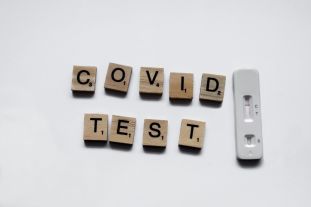Types of COVID Testing and How They Work

Both government and the people have been more conscious of their overall health and wellbeing after the outbreak of Covid-19. Just like any other communicable disease, the virus can only be eradicated by stopping its rapid rate of transmission.
Rigorous testing is the need of the hour. However, before you start searching for “COVID 19 PCR tests near me” on your smartphone, you need to understand the different types of Covid testing and how they work.
There are two types of covid-19 tests, and they have different purposes. These tests are diagnostic tests and antibody tests. Let us discuss these tests in detail.
Different coronavirus tests
- Diagnostic Test
Diagnostic tests are used to determine the presence of the virus in the body of a person. A slight show of the symptoms such as mild fever, sore throat, or headache can announce the entry of the virus into the body.
It is then when one needs to go for a covid-19 diagnostic test. Also, the diagnostic test for covid-19 is of two types, Polymerase Chain Reaction, commonly called PCR test, and Lateral Flow Tests, also known as LFTs.
- Antibody Test
Antibody tests check the presence of antibodies in those people who have already suffered an attack of coronavirus. An antibody blood test for coronavirus, also called serology test, helps in detecting the part of the population who has already developed antibodies. These tests determine if a person has immunity against covid or not.
Types of diagnostic tests
- Polymerase chain reaction (PCR) test
PCR tests are used for the determination of the RNA of the virus during the early symptoms stage or during the illness of the person.
When a sample of an infected person is taken to the lab for testing, substances like DNA polymerase or reverse transcriptase are added to the sample.
The purpose of the addition of the substances is to check the presence of any viral RNA. If enough copies of the RNA are visible, it proves the existence of the current infection.
Primers designed specifically during this biological procedure and probes attach themselves to the sequences of the genetic code of the virus. Then this attachment results in the presence of a pathogen.
Before you start your search for “COVID 19 PCR tests near me”, it is important to know that PCR may fail to show the correct positive result around 30% of the time.
A PCR test is used for the determination of the RNA of the virus. Even when a person is no more infected, the presence of the deadly virus in the body may show a positive result.
- Lateral Flow Test (LFT)
When a patient suffers from covid-19 infection, a sample from the nasopharyngeal area is taken and placed on an absorbent pad. The pad is moved along the capillary line to a strip that is already coated with antibodies.
This strip binds to the SARS-Cov-2 proteins. This will be shown as a colored line due to the presence of these proteins, which will indicate infection.
The LFTs provide faster results, just within 30 minutes. However, studies have shown the accuracy of this type of test is just on an average of 72%.
The antibody test for coronavirus
An antibody test is used to determine the presence of antibodies in the blood sample. Antibodies are proteins that our body forms as an immune response to the SARS-Cov-2 virus.
An antibody blood test also shows whether the person has been affected previously or not. Antibody tests help determine the immune response in the body of a person.
Studies have shown that the presence of antibodies can provide immunity against the virus. However, the duration of such immunity is not known.
Also, some people may still get infected by the virus.
• Sensitivity in an antibody test
Sensitivity in an antibody test, also known as true positive rate, helps determine people with the actual presence of antibodies in their bodies. This test also results in false negatives by showing the presence of no antibodies even when the patient has antibodies in their blood.
• Specificity in an antibody test
Specificity in an antibody test, also called true negative rate, helps identify people who do not have antibodies at all. This test also sometimes results in false positives where the test shows the presence of antibodies where there are none.




